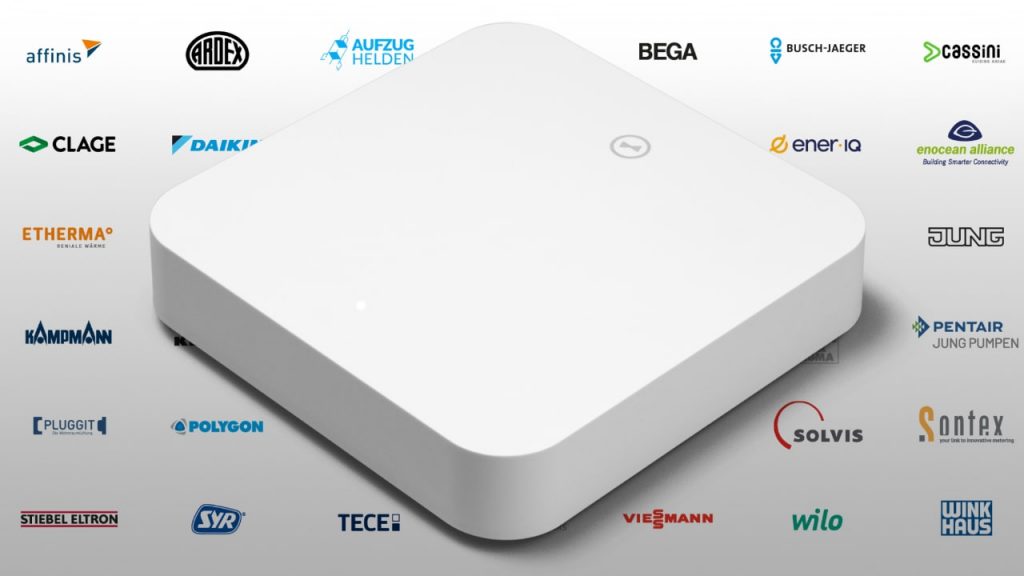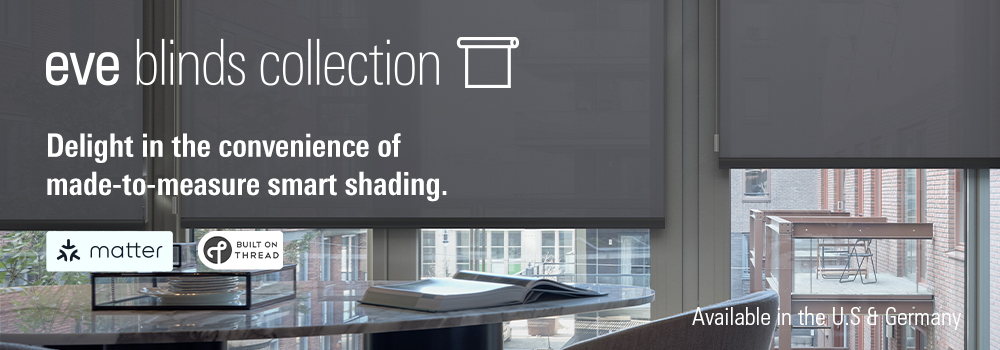
An interview with Michael Jüdiges, CEO of the development company DBT Digital Building Technology, which is behind the Wibutler platform (link). As a joint venture between the medium-sized companies Bega, Eltako, Oventrop and Viessmann, it combines products from more than 40 manufacturers in one system. The Matter standard will also play a role in the future. To what extent does Jüdiges explain in this conversation with matter-smarthome.
Dies ist die Übersetzung eines deutschen Interviews.
Zum Original bitte hier entlang.
Mr. Jüdiges, there is the Wibutler Pro as hub, the Wibutler platform and a manufacturer alliance of the same name. Who does what? Can you explain briefly?
Michael Jüdiges: The Wibutler IoT platform combines internet technologies with classic building technology and automation such as energy management to create a joint solution. This also includes using the Wibutler Pro to functionally combine a wide range of communication technologies in the smart home application area. The Wibutler Alliance is made up of companies that have joined this idea and are contributing their products to the platform.
So Wibutler is, roughly speaking, a cross-manufacturer smart home platform?
Jüdiges: It’s not just about smart homes. In addition to solutions for single-family homes and condominiums, there are also applications for smart buildings, i.e. for commercial residential and non-residential buildings. With Wibutler IoT, we support manufacturers in making their devices internet-enabled. They often still produce mechanical or purely analog products that have no Internet functionality. We assume that by 2030, all devices that are functionally embedded in a building infrastructure will also need to be internet-enabled in order to generate added value.
“By 2030, all devices that are functionally embedded in a building infrastructure must also be internet-enabled.”
How does this connection work? There must be interfaces for that.
Jüdiges: Exactly, the manufacturers provide interfaces or APIs for third-party systems. That’s a huge step – this fundamental willingness to be integrated. Because historically, the industry has tended to try to create closed jobs, i.e. to establish self-contained systems. What an API does not solve, however, is the interpretation of the data and the resulting functionality. Because if I, as a manufacturer, provide an interface, this initially only means that someone else should take care of the controls.
And this someone is the Wibutler platform?
Jüdiges: We said to ourselves: if we want to achieve general interoperability and smooth interaction between devices for the industry, then there has to be a neutral body that orchestrates and brings everything together. We have made this task the core of our activities and the entire technology development at Wibutler. We strive for close cooperation between the partners. This is the prerequisite for far-reaching applications and truly meaningful use cases. Wibutler operates as a neutral interface between a manufacturer and the multitude of devices that the other manufacturers contribute.
You have announced that the Wibutler platform will support the Matter standard. Does this change anything in your work?
Jüdiges: Not when it comes to connecting devices on the platform. Here, Matter is still not relevant enough as an interface because there are hardly any products from classic building technology that speak Matter themselves. We use the standard for interaction, for example with voice assistants. In this area, it makes many things easier than the previous integrations with Alexa, Siri & Co. The extent to which Matter will find its way into communication between products such as lighting and heating actuators or ventilation units remains to be seen. For this to happen, a major industry would first have to allow Matter into its products. The industry has not yet reached that stage. That’s why the Wibutler Pro initially works as a Matter bridge and does not have its own functions as a Matter controller. However, we are technically prepared for it. The second-generation Wibutler Pro also includes the Thread radio protocol, which can be activated via a software update if required.
“The Wibutler Pro initially works as a Matter Bridge and has no controller functions. However, we are prepared.”
What would have to happen for Matter to play a bigger role?
Jüdiges: There are many applications that can’t be implemented with Matter today. Let’s think of energy management with grid connection control. Or the German Energy Industry Act: how do we want to control our homes in an age of volatile energy markets? Such requirements are extremely relevant for digital control in residential or functional buildings, but there is no equivalent in Matter as yet. Energy management is on the development roadmap, but what will it look like? Are we talking about electrical energy management or also thermal solutions? On the Wibutler platform, we can implement all of this in parallel across the various communication technologies. That makes it charming.
A second important point is functional autonomy. The exclusive use of a Matter interface makes a device manufacturer dependent on the possible use cases of the available Matter controllers. However, we have already seen in the past what a dependency can lead to. If providers stop their service unexpectedly, functions are suddenly no longer available.
One problem with the controllers from Amazon, Apple, Google & Co. is that they have different functional scopes. With a HomePod I can use certain things from Matter, with an Echo or Nest Hub others.
Jüdiges: Exactly. That’s why the application software and orchestration should actually run independently of the hardware. It’s not for nothing that we talk about the “Wibutler OS”. It is our aim to simply load an operating system onto the building that offers all the necessary functions – from communication technology and energy management to the Matter controller. I can imagine the Wibutler OS as a partition on a boiler control system or on a permanently installed tablet. I think that more and more high-performance hardware will find its way into buildings and this hardware is powerful enough to run an operating system on it. We are already preparing for this increasing electronification of buildings with our software development. And Matter is part of this development.
“The application software should run independently of the hardware – for example as a partition on a boiler control unit.”
Do your member companies share this view?
Jüdiges: Matter is definitely a topic there. However, there are different levels of information and knowledge. Many companies are not yet able to assess the standard properly. But when Matter is mentioned in the same breath as KNX at ZVEI events, this clearly indicates a growing awareness in the electrical industry (editor’s statement: ZVEI is the German Electrical and Electronic Manufacturers’ Association). The situation is similar in the heating sector. Until now, interoperability in this area was primarily to be solved via the EEbus standard and suddenly Matter has emerged as a potential player. There is no uniform position and strategy yet, but the fact that two such established industry segments are debating the Matter standard tells us a lot about its importance.
However, we are not talking about years here, but rather decades. Buildings have a very long life cycle. Just look at how many KNX installations with a two-wire bus thave been installed over the last 30 years. They and all the know-how surrounding them won’t simply disappear just because IP-based communication is now available, which is also increasingly supported by established technologies such as KNX.
So the Matter revolution is still some way off?
Jüdiges: Years ago, I attended an event that was also about the Matter standard. Back then, it was still called CHIP – from Connected Home over IP. Someone came up to me there and said: “Well Michael, I guess that’s it for your business model”. He assumed that the new standard would replace everything. But in all the time I’ve been involved with building automation, new standards have been added – but virtually none of them have been dropped. Complexity has increased instead of decreasing and the need for orchestration has grown as a result.
“The world of digital control in buildings is too extensive and too complex for one standard alone.”
The world of digital control in buildings is too extensive and too complex for one standard alone. There are way too many use cases, too many security aspects. Consolidation is certainly possible, but I’m not worried about our business model. We see ourselves not only as a technology platform, but also as a networking platform. Within the Wibutler Alliance, we bring together players from the building technology sector, provide information and share knowledge. It is important to us that we enable partners to make the right strategic product decisions without favoring or neglecting any particular communication technology. As a platform, Wibutler is neutral, the Switzerland of building automation, so to speak.
Mr. Jüdiges, thank you very much for this interview.
Share this information:


